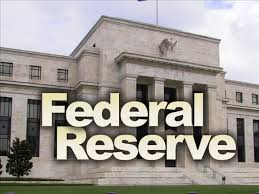Week in Review
The pivotal event of last week was undoubtedly the monetary easing statements released by the US Federal Reserve. The US central bank surprised the markets by adopting a more bullish stance than expected bolstering investor sentiment and propelling stock prices higher. The Fed empathetically acknowledged the growing strength of the US economic recovery by indicating that it may now, more than likely, instigate its first interest rate during 2015. Equities subsequently quickly pared the losses they had endured during the early part of last week typified by the Dow Jones Industrial Average soaring by nearly 500 points over the course of the next two days.
Prominent analysts summarized these developments by advising that the Fed successfully countered escalating concerns about the adverse impacts of constantly falling oil prices and a possible global economic slowdown. Janet Yellen, the Fed President, assertively expressed confidence in the current ability of the US economy to withstand the implementation of an interest rate hike next year. This viewpoint acquired further credence last Friday when John Williams, the President of the San Francisco Fed, informed the Bloomberg Radio that investors should now start preparing themselves for such an eventuality as early as next summer.
The rest of the world was also very active last week. Asian shares registered their best daily performance in over 15 months after Japan re-emphasized its on-going support for its current expansive stimulus policies. After weeks of constant declines, oil prices finally recovered late last week by rebounding aggressively from a 5.5 year low. As the Russian economy is heavily dependent on this vital commodity, the faltering Rouble managed to pare 5% of the massive losses it has recorded since last June.
What to Expect This Week
The following key economic indicators will be released globally over the course of the ensuing days:
On Monday, the Eurozone will post a primary Consumer Confidence index for November which is expected to extend its losses for the seventh consecutive month. Later in the session, New Zealand will issue its Trade Balance for November. A renewed interest in one of this nation’s prime product, milk, could help this indicator print a better result than presently advised.
Tuesday will be a very busy day. China will launch proceedings by publishing a Leading Economic Index for last month. If this parameter continues its downward descent, then the commodity currencies, such as the Australian Dollar, should weaken in unison. Next, Germany will disclose its Retail Sales number for November. The euro could receive a boost if this indicator can add to the gain of 1.9% it printed last month. The United Kingdom will then reveal its Gross Domestic Product for the third quarter of 2014. A surprise revision in either direction could produce a market moving event.
Later in the day, the USA will declare its Durable Goods Order for last month. The renowned unpredictability of this release could generate extensive price movements. The USA will subsequently announce its final Gross Domestic Product for the third Quarter. If this figure is revised higher, then such a development will provide the Fed with even more justification for hiking interest rates higher sooner than expected. At the same time, Canada will proclaim its GDP for October with a gain of 0.1% the favored outcome. The USA will later present its New Home Sales for November. Analysts are currently forecasting an improvement this time around. Australia will complete the session by printing its Leading Index for October which is expected to weaken for the third straight month in a row.
No data is scheduled for release on Wednesday, Christmas Eve.
Japan will post its Housing Spending for November on Thursday. Will new stimulus policies help this parameter reverse seven successive months of declines?
No data will be produced on Friday.




